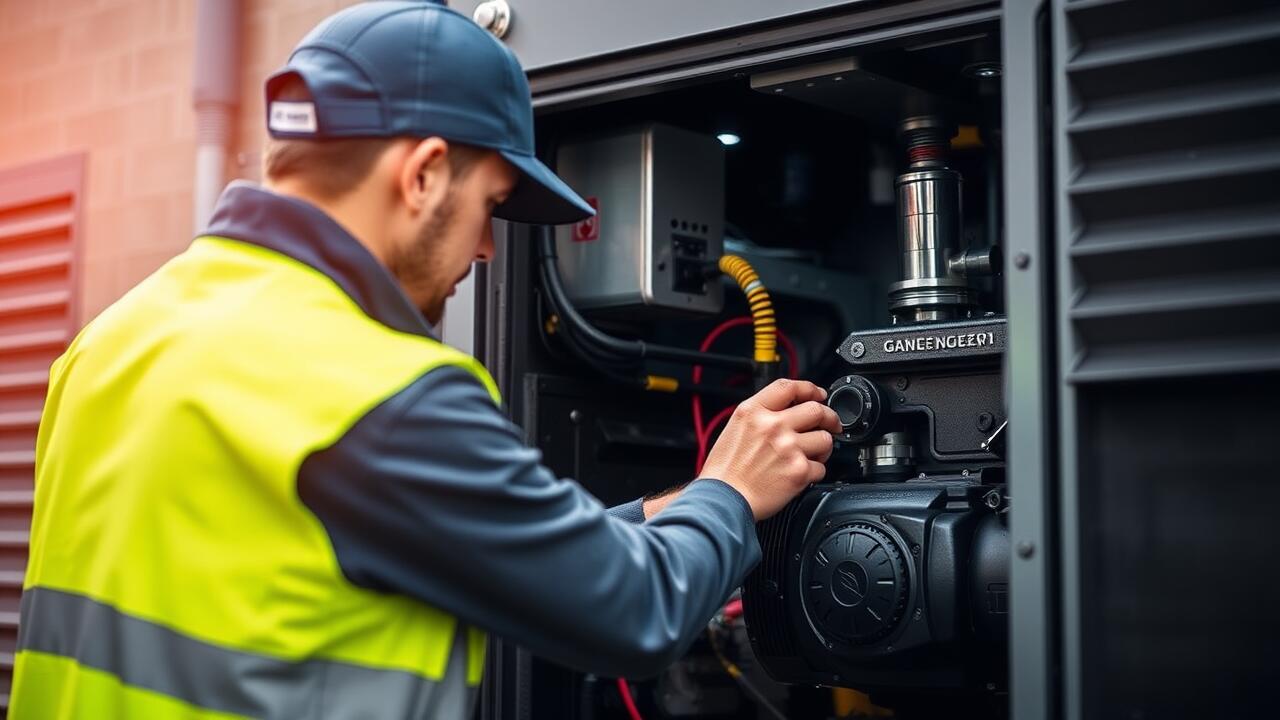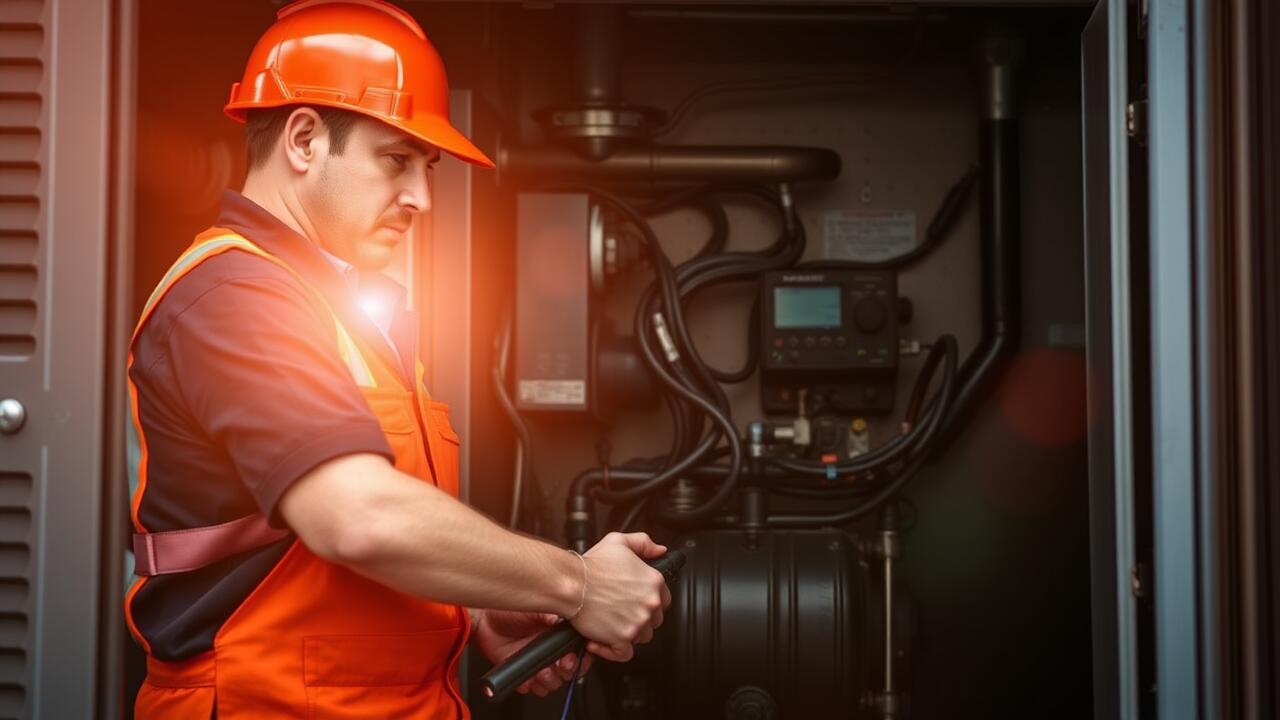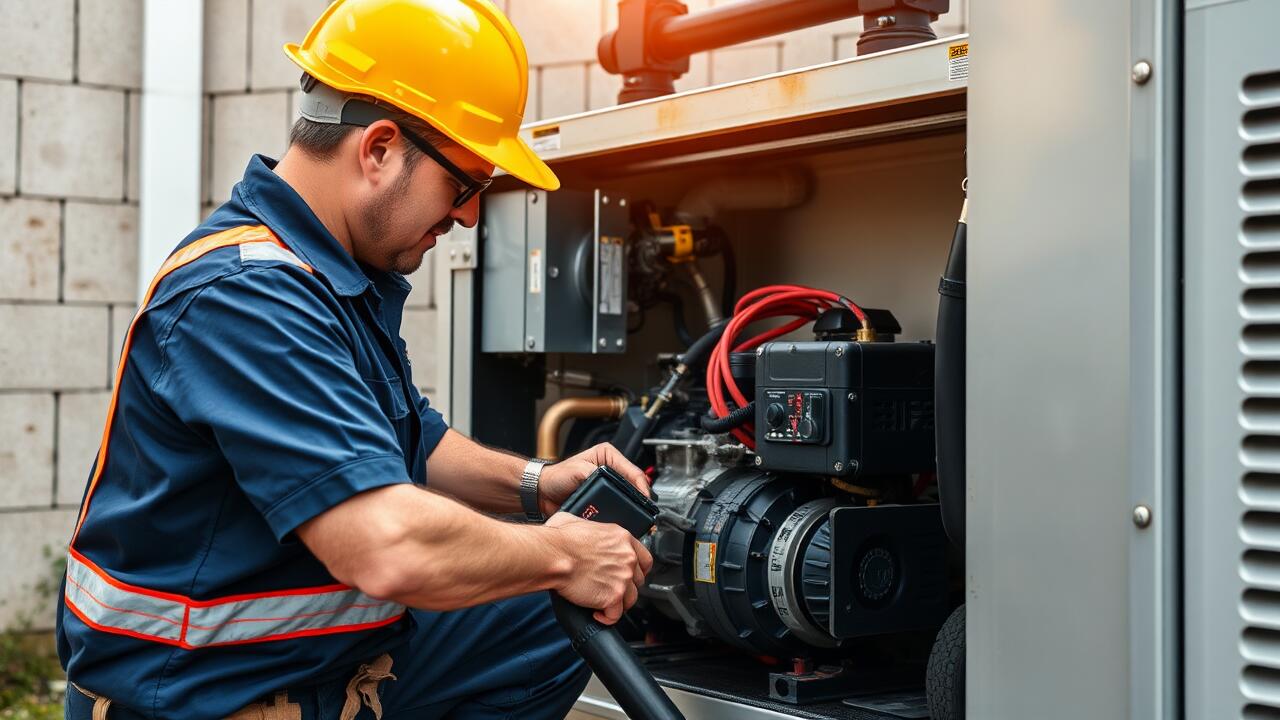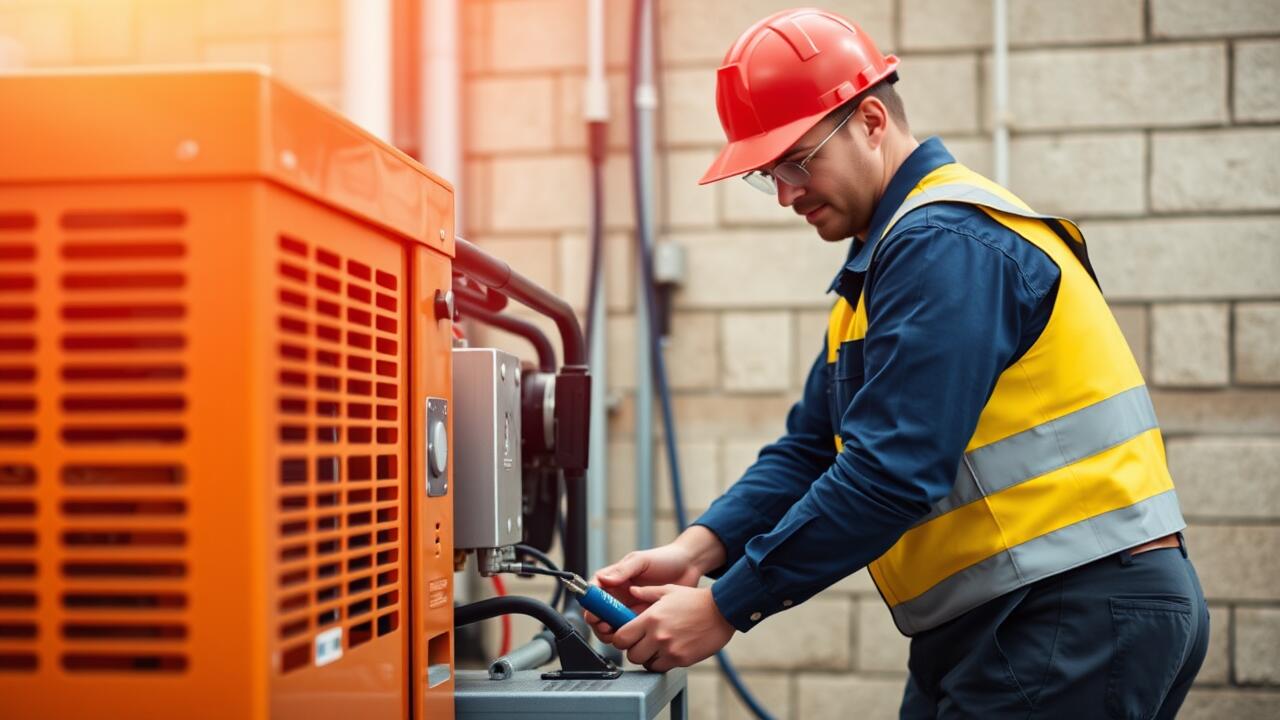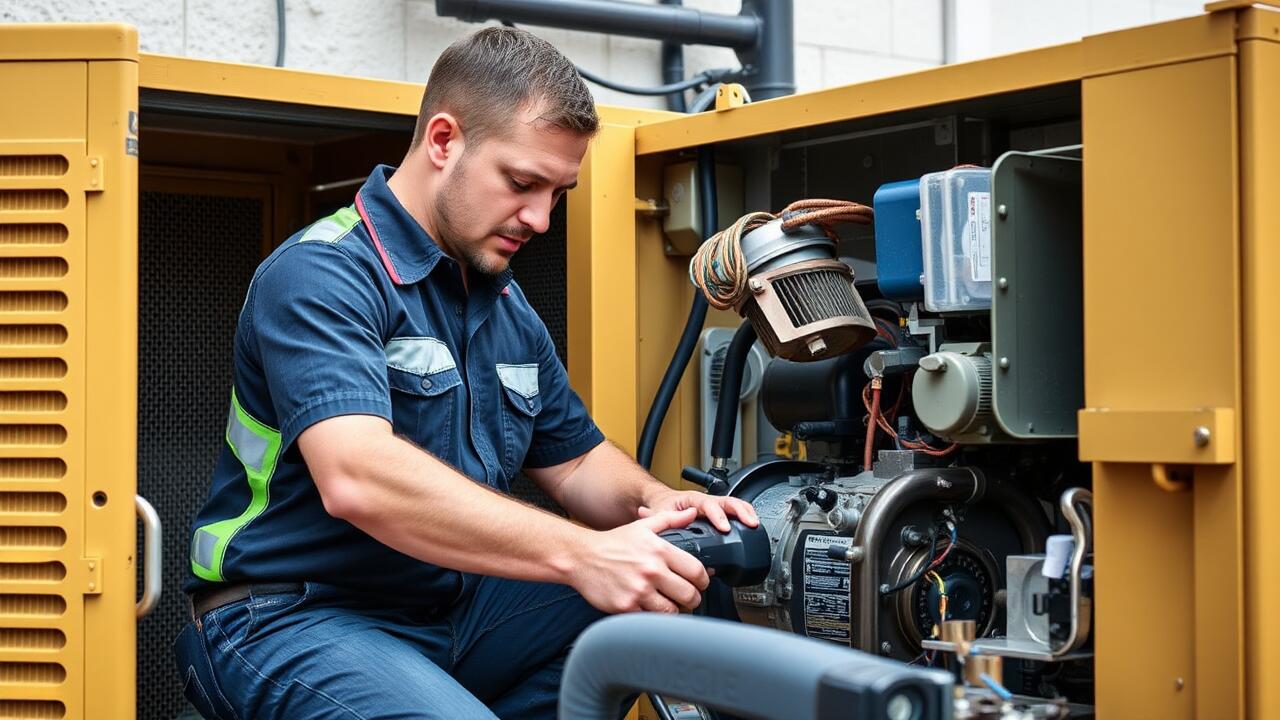
Basic Steps for Installing a Portable Generator
Installing a portable generator requires several important steps to ensure safety and efficiency. Start by selecting a suitable location for the generator, away from doors and windows to avoid carbon monoxide buildup. A flat, stable surface is ideal; this helps with proper operation and reduces the risk of tipping over. Next, familiarize yourself with the specific model's manual to understand its requirements and follow any manufacturer instructions for setup.
After positioning the unit, you will need to connect the fuel and check any oil levels before attempting to start the generator. In Midtown, Houston Generator Installation, it is crucial to use the right type of fuel and oil as specified by the manufacturer. Once prepared, start the unit according to the guidelines provided. Be mindful of safety precautions throughout the process, including wearing protective gear and ensuring proper ventilation in the area.
Connecting Fuel and Starting the Unit
When connecting fuel to your portable generator, it's essential to use the correct type of fuel as specified in the owner's manual. Most portable generators run on gasoline, but some may operate on propane or natural gas. Ensure that the generator is situated in a well-ventilated area away from flammable materials. Check for any leaks in the fuel lines before starting the unit to avoid any potential hazards. Always use an appropriate container for gasoline and never fill the generator while it is running or still hot from previous use.
Starting the unit typically involves a few straightforward steps. First, ensure the generator's fuel valve is open and that the choke is appropriately set, which usually means setting it to the closed position for a cold start. After ensuring all connections are secure and the oil level is adequate, you can pull the starter cord or turn the ignition switch to start the generator. For those in regions like Spring Branch West, Houston, generator installation often includes guidance on this process to ensure everything runs smoothly from the outset.
Installing a Standby Generator
Installing a standby generator requires careful planning and consideration of various factors. First, determine the appropriate location for the generator, ensuring it is positioned away from windows and doors to prevent exhaust fumes from entering the home. The generator should also be installed on a stable base, like a concrete pad, to minimize vibration and damage over time. Essential local codes and regulations must be reviewed to guarantee compliance, especially regarding noise levels and clearances.
One important aspect of the installation process is connecting the unit to your home’s electrical system. This involves the installation of a transfer switch, which must be wired properly to allow for a seamless transition between grid power and generator power. Hiring a professional, especially for complicated wiring tasks, is often recommended. For those in need of expert assistance, the Midtown, Houston Generator Installation services can provide the technical know-how to ensure a safe and efficient setup.
Key Components of Standby Generator Systems
Standby generator systems consist of several key components that ensure reliable power supply during outages. At the core is the generator itself, which converts fuel into electricity. This part is typically housed in a weatherproof enclosure, designed to withstand various environmental conditions. Alongside the generator, an automatic transfer switch (ATS) plays a crucial role by detecting power outages and swiftly switching the electrical load from the utility to the generator. This seamless transition ensures minimal disruption to the power supply, allowing homes and businesses to continue functioning normally.
Another vital component is the fuel supply system, which can vary depending on whether the generator runs on natural gas, propane, or diesel. Each fuel type presents unique benefits, such as availability or efficiency. In addition to these elements, the battery and control panel are essential for starting the generator and managing its operations. Understanding these components is crucial for anyone considering a standby generator installation, especially in regions like Midtown, Houston, where sudden storms can lead to power interruptions.
Wiring Considerations
Wiring considerations are crucial for any generator installation, whether portable or standby. It is important to assess the electrical load that the generator needs to support. Calculate the wattage requirements of critical appliances to ensure that the generator can handle the demand. Proper wiring will also prevent overheating and potential hazards such as electrical fires. In areas like Spring Branch West, Houston, generator installation must adhere to local electrical codes and regulations, which help to ensure safety and compliance.
When connecting a generator to the home’s electrical system, using an adequate transfer switch is necessary. This switch safely isolates the generator from the utility power, reducing the risk of back-feeding, which can endanger utility workers and damage the generator. Ensuring that all wiring is done correctly and that appropriate gauges are used can significantly impact the efficiency and reliability of the generator. Consulting a professional can help navigate these challenges, particularly in areas with specific requirements like Spring Branch West, Houston.
Understanding Electrical Connections
Understanding electrical connections is crucial for safely integrating a generator into your home’s power system. Proper wiring ensures that the generator can provide an uninterrupted power supply during outages. It’s important to use the right gauge of wire to handle the generator's output safely. Overloading wires can lead to overheating, so adhering to guidelines for circuit breakers and load requirements is essential.
When considering a generator installation, especially in Midtown, Houston, it is advisable to consult local codes and hire a licensed electrician if you’re uncertain about any part of the process. Connecting a generator incorrectly can pose serious safety hazards, including backfeeding into the grid. Installing a transfer switch is a recommended safety measure that can separate the generator's power from the utility supply, ensuring both your home and workers remain safe.
FAQS
Is it safe to install a generator myself?
While it is possible to install a generator yourself, safety depends on your experience and knowledge of electrical systems. If you are unsure, it's best to consult a professional.
What tools do I need to install a portable generator?
For installing a portable generator, you will typically need basic tools such as a wrench set, screwdrivers, a fuel can, and possibly a power cord depending on your setup.
Can I connect my portable generator directly to my home’s electrical system?
No, connecting a portable generator directly to your home's electrical system can be dangerous and is illegal in many areas. A transfer switch should be installed to safely connect the generator.
What is the difference between a portable and a standby generator?
A portable generator is designed for temporary use and can be moved easily, while a standby generator is permanently installed and automatically provides power during an outage.
Do I need a permit to install a standby generator?
Yes, many local jurisdictions require permits for the installation of standby generators to ensure compliance with building codes. It's important to check with your local authorities before starting the installation.

